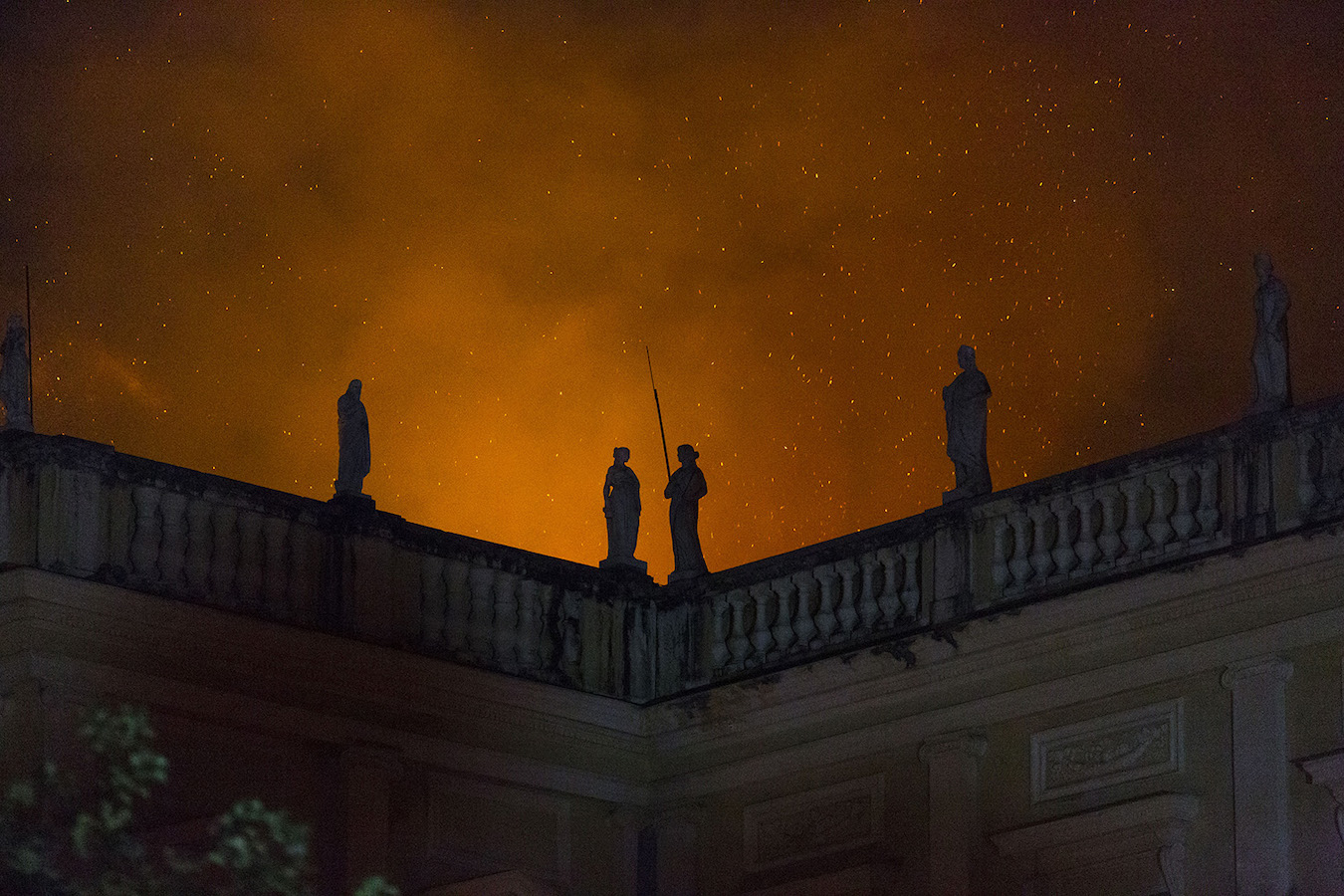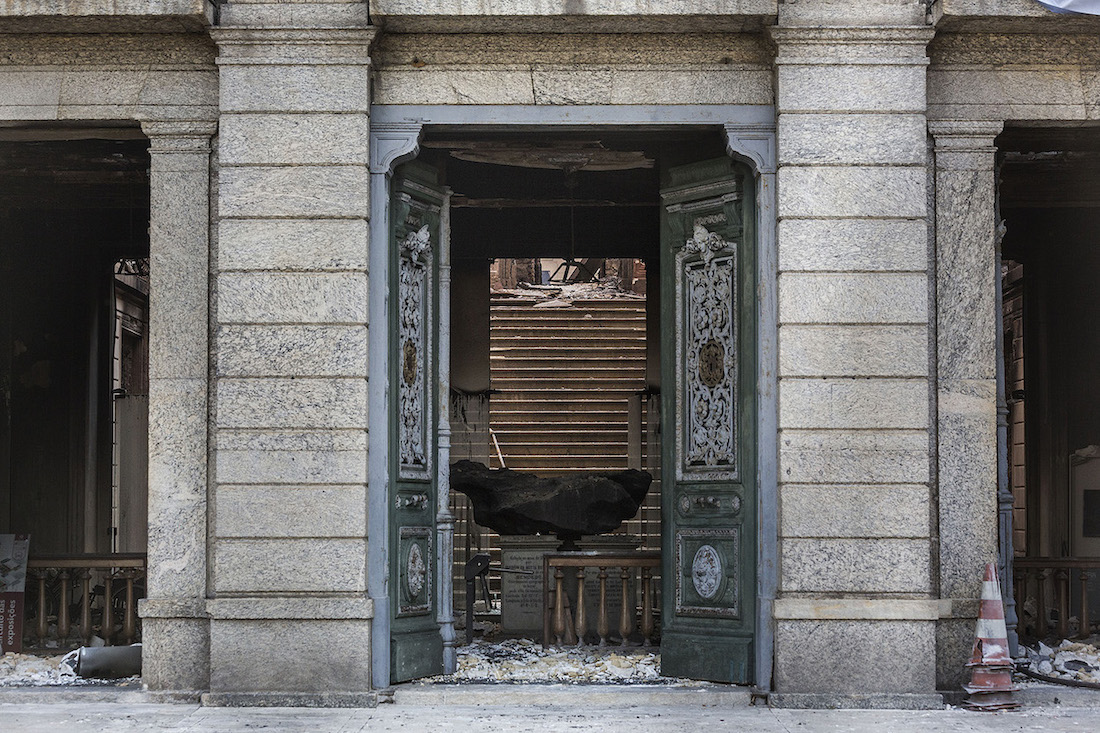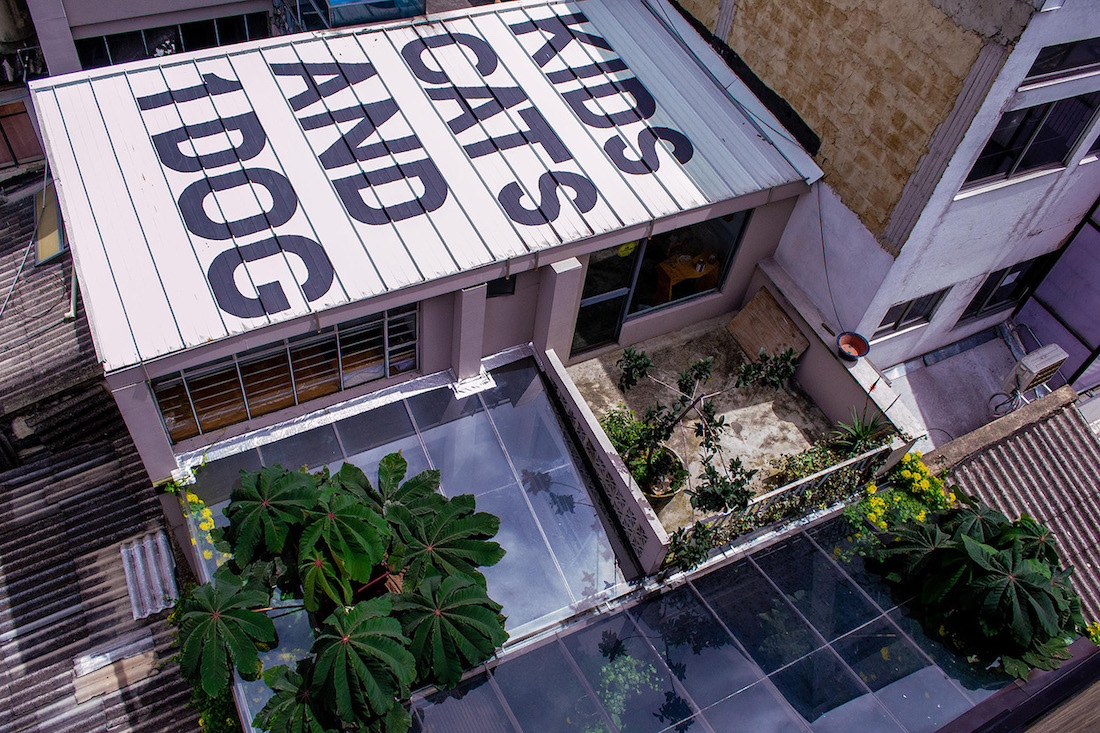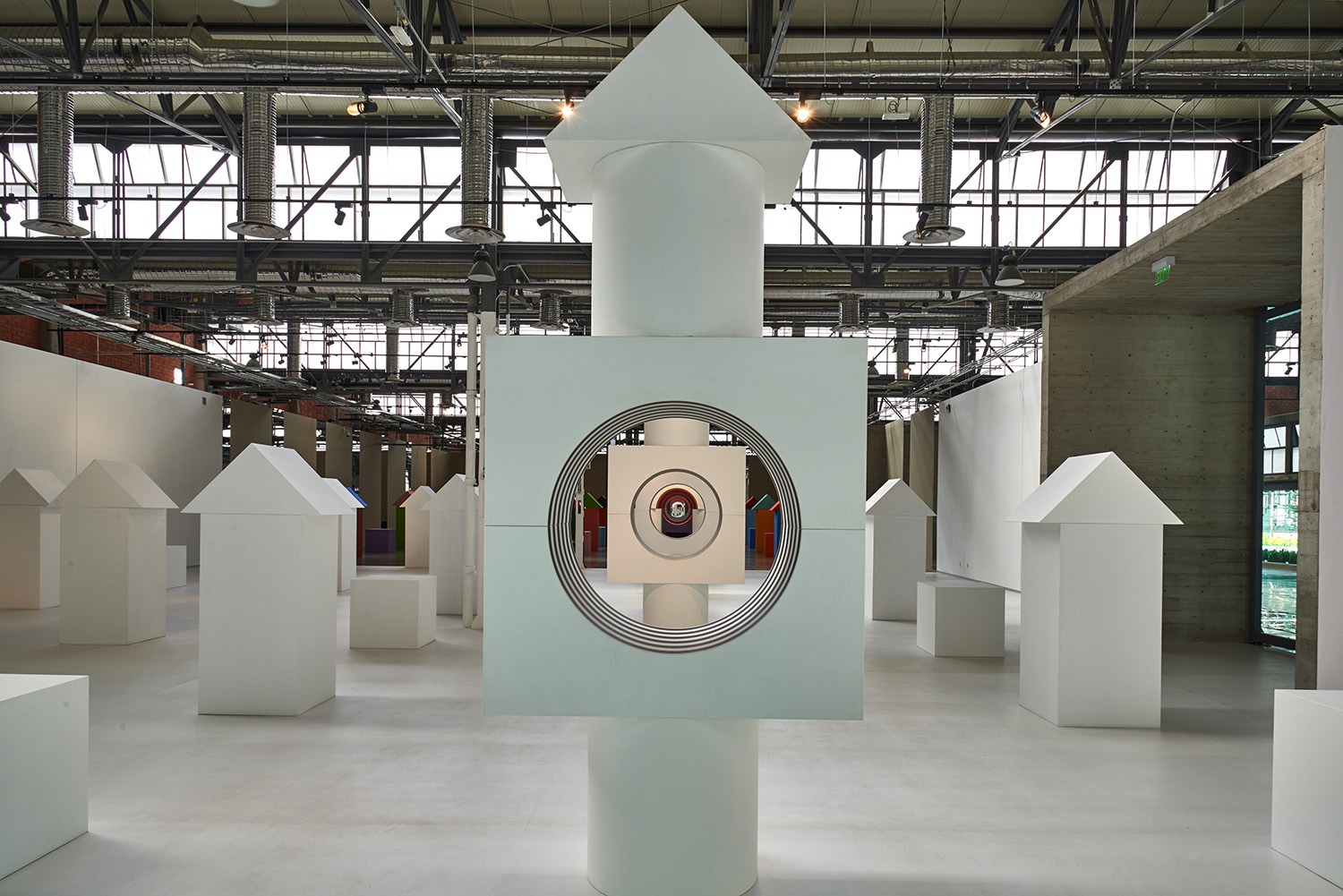Dorothée Dupuis, Editor-in-Chief of Terremoto, reflects on the tensions that exist between the museum space and the artist-run space as architectures that allow the exercise of cultural policies.

Towards the Orange Exhibition Space
I began to write this article just after the dreadful fire that ravaged the National Museum of Rio de Janeiro in Brazil. The institution had the largest collection of anthropology and natural sciences in Latin America, as well as a dynamic research department. It contained many irreplaceable artifacts, among them, the skull of Luzia, the earliest known woman in the Americas, who dates back to 12 thousand years before our era and was discovered in 1975 by the anthropologist Annette Laming-Emperaire. [1] The museum also housed a library and many printed documents which went up in flames; in fact, these were probably one of the major reasons why the fire spread so quickly. Initial investigations into the fire concluded that one of the causes of the tragedy was the lack of maintenance on the building following a cut in public funding over the last few years. The crisis which Brazil has been suffering for the past three years is certainly not exempt from its share of responsibility. Old electrical circuits; no fire alarm worthy of that name; precarious storage of documents; buildings that do not comply with the safety protocols: the museum did not maintain itself, especially in light of the fact that it was located in a centuries-old historic building which was not originally designed to house collections or to accommodate researchers and vast quantities of people. Concepts such as heritage, history, or art seem immaterial to us, but the very idea of conservation in its modern meaning (which came into being more or less in the nineteenth century) focuses on, by contrast, the “why” and “how” of preserving artifacts and objects of symbolic value. The modern museum, with its architectural signature and its strict safety standards, has acquired this way of thinking.

What is stored in the museum and why? The political project of creating buildings to house artifacts is relatively new in its institutional version. In Latin America, as in many other formerly colonized regions all over the world, the debate advances in the construction of its own institutions instead of entrusting its artifacts to European and North American museums, which for a long time have given themselves the right to think that only they are fit to preserve these artifacts—a dangerous theory which some individuals are taking up once again in light of the fire at the National Museum of Rio de Janeiro. With regards to contemporary art, the 2000s marked the beginning of a paradigm shift in Latin America, with huge construction projects such as the new headquarters of the Museo Universitario Arte Contemporáneo (MUAC) and Museo Jumex in Mexico City, the expansion of the Museo de Arte de Medellín, and the Instituto Moreira Salles Paulista in São Paulo, Brazil, developed alongside the Inhotim botanical garden by the mining magnate Bernardo Paz. The majority of these institutions house private or corporate collections with no future known plans to involve the State for preservation. Some independent projects such as FLORA ars+natura in Bogota, Colombia or PIVÔ in São Paulo don’t have collections, but are sites of residencies, production, and exhibitions that also include architecture in their development plans. FLORA ars+natura, for instance, has bought and extended its own building, while PIVÔ decided to maintain, renovate, and reoccupy the historical Edificio Copan by Oscar Niemeyer. In any case, these two endeavors state the importance of architectural refurbishment in working class neighborhoods as necessary strategies to the development of the cultural sector nowadays—highlighting implicitly the failure of state intervention in this sector.

Apart from these exceptions, there are a large number of independent spaces that fight to find a venue in order to operate in the urban context, which entails a high degree of uncertainty according to the waves of urbanization related to the financing of the economy, tourism, and gentrification. In the end, in Latin America, the tricks are the same as those in more “privileged” places such as Paris or New York: repurposed apartments or spaces loaned by friendly landlords or those aiming to speed up the revival of their neighborhood. A particular contrast between the independent spaces of the northern hemisphere, named artist-run spaces there, and those of Latin America is that the former often serve as stepping stones to the institution and the market, while in Latin America that path doesn’t seem like a viable option. This raises the question of the perpetuation of these spaces and their survival in the mid-term, something that, again, can only be considered with serious and planned public support.
The housing story of Biquini Wax, Mexico City’s mythical independent space founded in 2011, is sadly exemplary of this. The collective began in a house in Mexico City’s Escandón neighborhood occupied by three of the group’s members until February 2017, when the building’s owner—clearly overwhelmed by the number of events and parties organized in the house—refused to renew their lease. In light of this, the gallery kurimanzutto lent them a house in the Buenos Aires neighborhood until the last Saturday of September 2018. In fact, the gallery had hoped to reassume occupancy of the plot of land earlier in order to build their storage unit, but the earthquake on September 19, 2017 disrupted the timing: parts of the house were damaged and the housing situation in the city worsened, which certainly caused the landlords to feel empathetic to the Biquinis’ situation and therefore to extend the temporary lease. But where will Biquini go now? They are putting together a crowd-funding campaign in order to rent a space, but it seems that the prices are too steep, a phenomenon which was actually intensified after the September 19th earthquake. The generosity of the private sector has its limits and, in the case of Mexico, public support for the cultural sector through the National Fund for Culture and the Arts (FONCA), specifically, continues to be random and irregular.

Artists don’t escape the racist, sexist, and classist relations inherent to the development and action of architecture of the artistic projects they lead. The cards remain mainly in the hands of planners and individuals that have the economic power in order to achieve it, and there is too much money at stake for ethics not to fight over those interests. The tendency in Latin America is therefore to leave the construction of important cultural installations to the private sector or, in the worst-case scenario, to propose public-private alliances that often seem to be linked to corruption. Both cases leave doubts about the artistic leeway for decision-making that such institutions are left with regarding the interests of the corporations to which they should associate themselves in order to exist—often big industrial or financial groups. Recently, Iván Duque, the new Colombian president and promoter of the “Orange Economy” [2] to which his mandate was dedicated in the Inter-American Development Bank, proposed the dubious idea of opening “credit lines” through banking institutions for agents of the cultural and artistic sector as a way of overcoming the lack of governmental funds dedicated to this field. In line with neoliberal logic, the use of the private sector argues cynically as a tool in order to strengthen the public sector, does this really work in the cultural one? What other alternatives do we have? To which institutions can we leave the task of constructing the museums and institutions of tomorrow, and with what vision? When the politics is clientelist and it is constructed with a short term vision—and now that the specter of another possible fall in the stock market around 2020 (according to some experts) slowly begins to appear [3]—one can doubt the results of those hand games. The upkeep of the infrastructure in part by the state or by the citizens now seems like a utopia of the twentieth century, backed out without a sigh—and not only in the cultural sector, but also in general.

The discourse surrounding the restoration of industrial buildings has only just begun in Latin America whose heritage hasn’t broken down as much as it has in Western countries. In addition, the idea of development often goes against heritage. One would have to take into consideration the ambition to create sustainable art venues that are in harmony with their environment. The role of artists as artisans in favor of the transparent development of the habitats increases, as does the tendency to create artist residencies in abandoned or peripheral places, seeking naïvely to change social situations. This thus raises the question of the role of art in the constructed world, from the conscience of the power structures which control the spaces, especially the least visible or “institutional.” In Mexico, the art world was surprised when the Macro Espacio para la Cultura y las Arte de Aguascalientes, an enormous museum restored and inaugurated within the span of a few months in 2016 under the impetus of the local governor, opened. The MECA restored fifty-six hectares of abandoned local railway that had deteriorated slowly over the second half of the twentieth century when highways became the more popular method of travel. To this day, the museum has not met its promises in terms of consistency of programming and openness to a more global and prospective contemporary art—demeaning the local and national artistic production—and in particular, has not been able to reflect on its industrial history. On the other hand, a slightly more unofficial project such as visual artist Rolando López’s artistic project Museo Guggenheim Aguascalientes, an online virtual museum with a program of open-air performances that was located in a toxic landfill left behind by the old exploited mines that the Guggenheim family owned until the first half of the twentieth century, proposed an exhaustive reading of the territory and its dematerialized past. This project engaged with land art with a glocal focus and was especially critical of what a museum can and should be in relation to those who finance it and even the land upon which it is build.

Ícaro Lira is a Brazilian artist who has worked in occupied (ocupação in Portuguese) spaces. He has decided to make art in collaboration with the residents of these places, where he also becomes a resident, highlighting the idea of the artist as an informer of the interests that govern the land and which prescribe the precariousness of the situations in big cities such as São Paulo, in turn highlighting the classist, racist, and sexist mechanisms of any architecture. For the project Museu do Estrangeiro, which opened in the Espacio Cultural Oswalde de Andrade in 2015 and closed during the festival Videobrasil in the SESC Pompei in 2017, Lira invited self-taught artists from refugee communities to exhibit their work along with his own and other elements that documented their discussions and meetings. Lira asked that Videobrasil include the names of these artists in the festival’s artist lists. The festival rejected this proposal, placing Lira in an awkward position before the institution—a frequent occurrence for artists working in “social practice”— and again calling into question the idea of the museum as a true catalyst of social integration.
Is it really impossible to decolonize the museum from its patriarchal and elitist stance, even with the best intentions?
It is difficult to attack the institution, to criticize the structure of power represented by these austere and rigid walls. The museum is a place that both destabilizes and strengthens power. The institutional critique that developed in Europe in the 1990s was not possible in Latin America due to the fragility of its institutions and its ambiguous relationship to the notion of the state, as well as its irresponsibility in the organization of its citizens’ lives, which were often instead allocated to private interests. Given the lack of accountability that the governments communicate to their citizens in Latin America, how can one think that the same won’t happen in the museums and spaces that secularize the culture? Artists are naturally suspicious of the institutions that they court at the same time, expecting their validation and in search of a path towards possible professional, social, and elitist advancement, even while it is all probably illusory given the context of generalized inequality of the Americas.

Nevertheless, between the earthquakes and the economic and institutional crises, we ought to continue believing in our institutions in order to occupy them from within their imperfections. In August 2015, we organized a launch party for Terremoto in the recently inaugurated Museo Jumex, where Ling Sepúlveda frantically cut oranges, increasing its noise levels through a microphone, while one of the founders of Biquini Wax, Daniel Aguilar Ruvalcaba, prepared to read a dystopian text [4] produced for the magazine in which he described the apocalyptic fusion of the Soumaya and Jumex museums by means of a tremor that fills the Plaza Carso, triggered by the imaginary intercourse between Carlos Slim and his wife. When Daniel began to read his words into an imaginary microphone made up of a cheap Nokia mobile and a grapefruit, an unlikely storm broke out on the terrace of the museum—a kind of prophecy of the September 19th earthquake, which would occur a few years later—with the sound of torrents of water and wind over the sound of guests made enthusiastic by so many sexual allusions. While buildings designed by famous architects collapse and intercourses continue frantically, other vertical, parallel lines strive while sabotaging at the same time, witnesses of civilizations’ greed and the fall of the stock markets. What neighborhood will be the lucky place ready to receive the future activities of Biquini? There is no doubt that it will be your next orange investment.








Comments
There are no coments available.